Day 33: Cuffs
An interesting alternative to wraps on the whole upper body is to use cuffs around the arms. This allows to create a restrictive position without binding the arms to the torso. It also creates additional challenges and risks as placement of the cuffs on the arms is more difficult, with less space to avoid exposed nerves. This family of ties is often referred to with the Japanese terms Hojo Takate Kote 捕縄高手 小手 as a reference to hojo cuff (inline cuffs) that were commonly used in Japanese martial art Hojōjutsu.
It is recommended to review Day 12 Inline Cuffs before exploring this concept.
Cuffs Box Tie Hybrid
Replacing a wrap of a box tie with a pair of inline cuffs creates an interesting tie that is structurally similar to a classic box tie and leaves the front of the chest more exposed.
Placement of the cuff needs to be done carefully. It is harder to avoid the radial nerve on the top of the arm, and the ulnar nerve as we tie closer to the elbow. You’ll want to find the right balance of tension, holding in place while not digging into the nerves.
An easier version is to start from the first rope box tie pattern and add cuffs on the lower arms. Leveraging the stability of the initial structure to add a row of cuffs, or more.
For a bigger challenge, using no wraps at all and inline cuffs as a structure, creates a tie that can be both minimal and restricting at the same time. It also makes the tie almost invisible in the front.
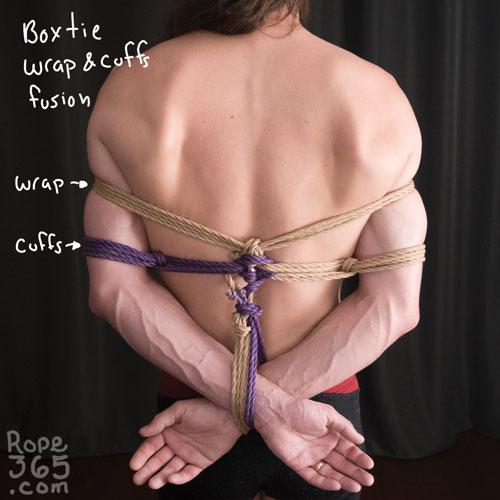
Hybrid Chest and Cuffs Box Ties
It is common to mix adding cuffs with hybrid chest box ties as a way to mix the support from the chest and the restriction from the cuffs. Combining chest wraps with cuffs is a great way to avoid load on arms while maintaining restriction.
A great variation is to use the Kimono tie chest structure as a base structure to add cuffs. This particular pattern was a classic tie from Akechi Denki and now taught by Nawashi Akechi Kanna.
Expanding a Box Tie with Cuffs
Cuffs can be added to use up ropes, add support, make the tie even less escapable or just make it visually pleasing. Horizontal cuffs on the arms below the lower wrap will add a dramatic effect on the tie, making it look more complex and even more restricting. We have to be very careful as we tie closer to the elbows. Adding vertical cuffs on the forearms will add some additional support while not affecting the appearance of the tie from the front.
Practice Time!
Spice up your favourite box tie design by adding some inline cuffs to it.
Self-evaluation checklist
- Frictions are tight and compact with no undesired twists
- Tension is even across the tie
- The cuffs are flat against the skin with no pressure to exposed nerves
- Is the tie symmetric?
- Pull the tie in different directions; how does it hold?
Exploration ideas
- How many cuffs can you make in a single tie?
- Try different placements for cuffs, which ones feel the most comfortable?
- Combine different chest structures with cuffs, which one is your favourite?
Solo tip
- Ok this one is actually hard to cheat and self-tie, what’s your trick to self tie inline cuffs behind your back?
Inspirations and Resources
- Is the TK dangerous by WykD Dave
- Koden Shibari by 鵺神流
- Videos Yukinaga Max
- 高手小手 一本縛りby kamui jyubei
- ‘Hishi Hojo’ TK by Bondage Tuition
- Връзване на “ходжо хиши” (hojo hishi) by SilentTeddy Bear
- Photo by Asiana
- Photo by Odys
- Shibari Box Tie by TomFooleryRope
- Pictures by Butterflybondage 1 2 3 4
- Picture by Trialsinner
- Picture by Anatomie Studio
- Picture by The Silence
- Picture by Odys
- Picture by OsadaSteve
- Picture by MyBoundMuse
- Photo by Asiana
- See more box tie videos beyond this topic on the Rope365 Youtube playlist. Note that video references may display risky or unstable techniques, viewer discernment is advised. https://www.youtube.com/playlist?list=PLkrdRffh_Gg3jGVZNDK-RN5al99o3NY-e

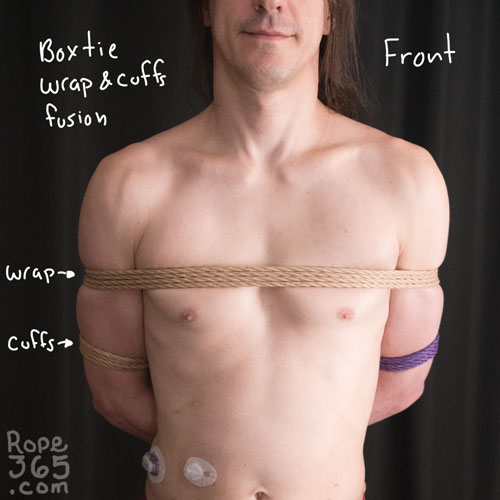


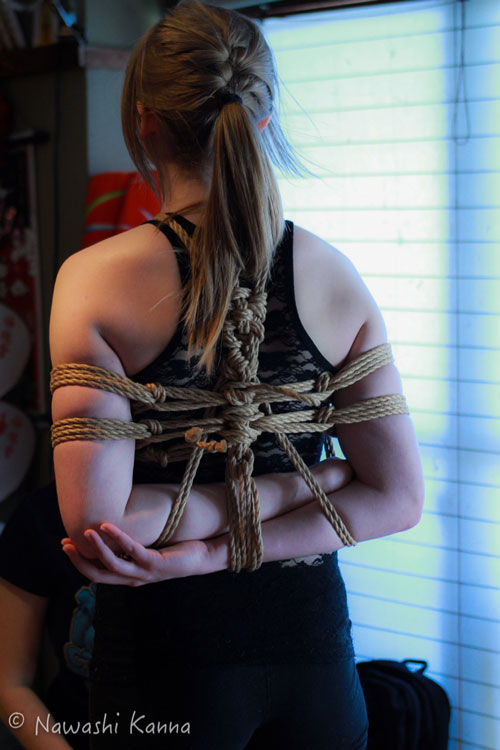
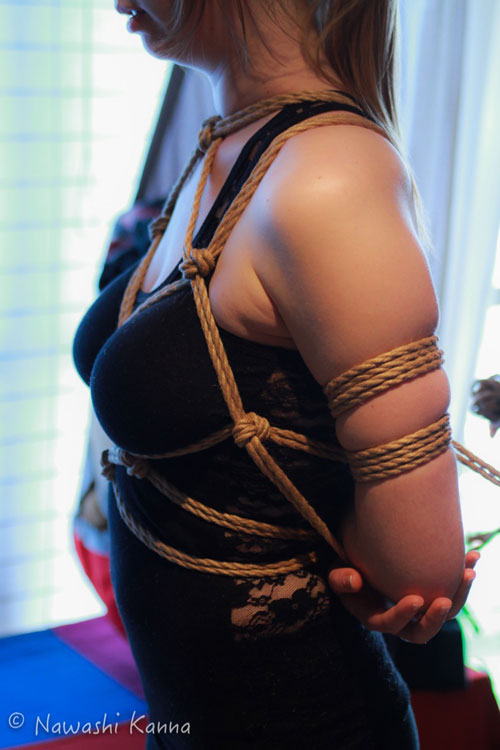
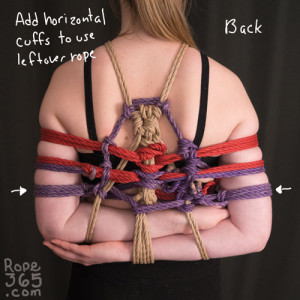
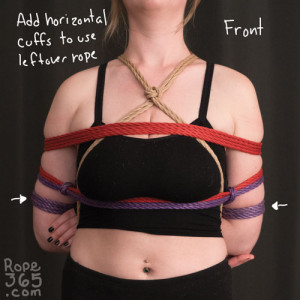
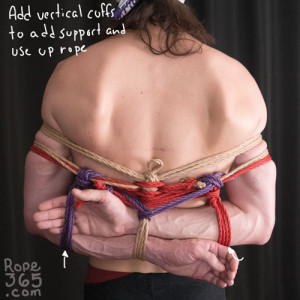
Leave a Reply